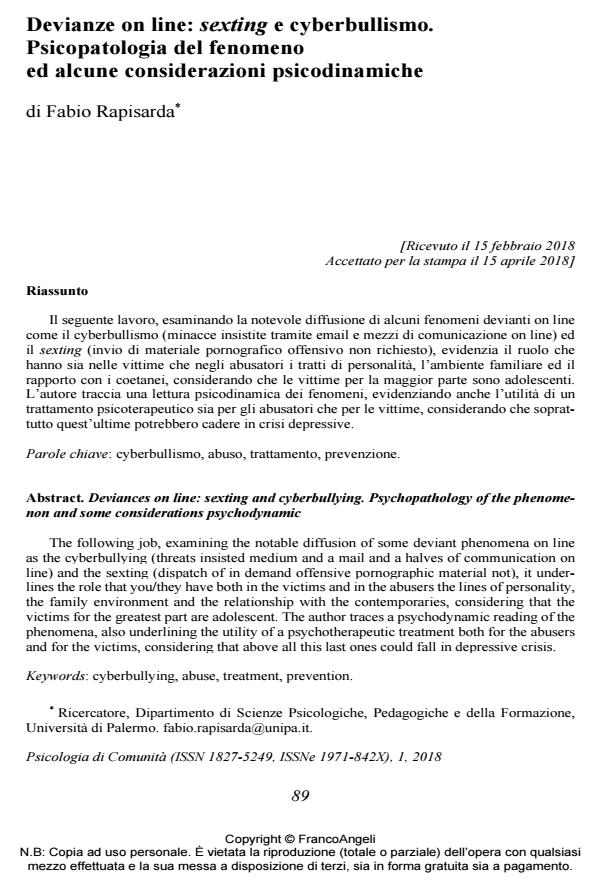Deviances on line: sexting and cyberbullying. Psychopathology of the phenomenon and some considerations psychodynamic
Journal title PSICOLOGIA DI COMUNITA’
Author/s Fabio Rapisarda
Publishing Year 2018 Issue 2018/1
Language Italian Pages 19 P. 89-107 File size 233 KB
DOI 10.3280/PSC2018-001006
DOI is like a bar code for intellectual property: to have more infomation
click here
Below, you can see the article first page
If you want to buy this article in PDF format, you can do it, following the instructions to buy download credits

FrancoAngeli is member of Publishers International Linking Association, Inc (PILA), a not-for-profit association which run the CrossRef service enabling links to and from online scholarly content.
The following job, examining the notable diffusion of some deviant phenomena on line as the cyberbullying (threats insisted medium and a mail and a halves of communication on line) and the sexting (dispatch of in demand offensive pornographic material not), it underlines the role that you/they have both in the victims and in the abusers the lines of personality, the family environment and the relationship with the contemporaries, considering that the victims for the greatest part are adolescent. The author traces a psychodynamic reading of the phenomena, also underlining the utility of a psychotherapeutic treatment both for the abusers and for the victims, considering that above all this last ones could fall in depressive crisis.
Keywords: Cyberbullying, abuse, treatment, prevention
Fabio Rapisarda, Devianze on line: sexting e cyberbullismo. Psicopatologia del fenomeno ed alcune considerazioni psicodinamiche in "PSICOLOGIA DI COMUNITA’" 1/2018, pp 89-107, DOI: 10.3280/PSC2018-001006